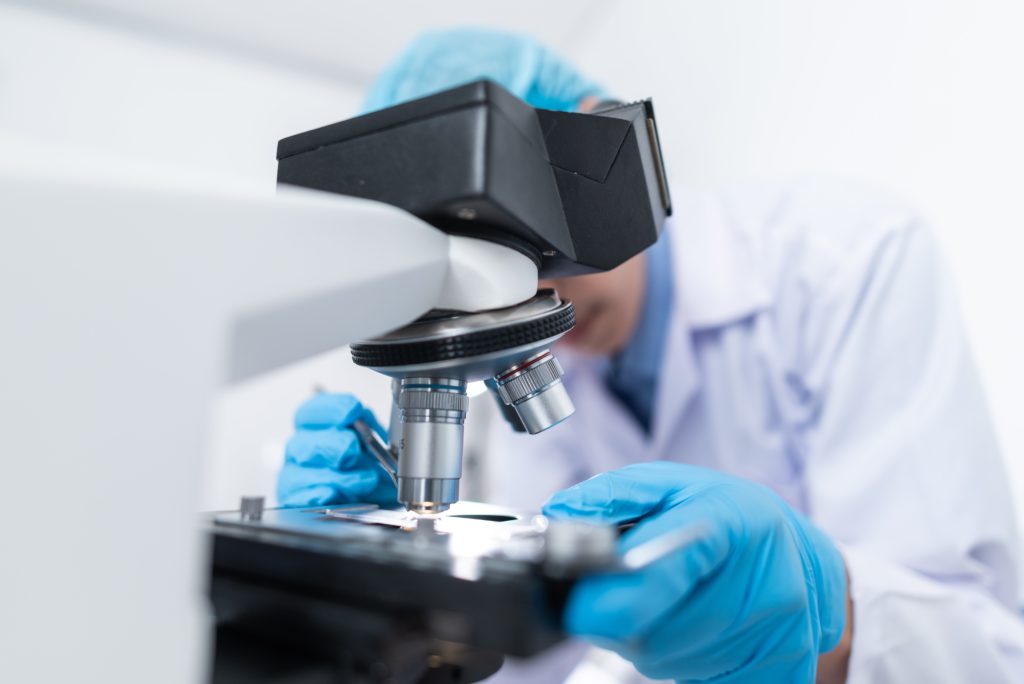
The complete guide to understanding Parkinson’s .Parkinson’s Disease is a progressive neurological disorder that affects movement. It typically begins around age 50, and symptoms worsen as time progresses. The first signs of Parkinson’s are often small things like shaking hands or an unsteady gait. Still, the symptoms can become much more severe over time as nerve cells lose their function. This may include difficulty swallowing and speaking, impaired balance, slow movements, and rigid muscles. People with Parkinson’s’ often experience anxiety because they fear losing their independence to this illness.
Parkinson’s Disease’s progression can be incredibly frightening for those affected. However, there is still hope. There are treatments available that can help lessen the symptoms of the disease and improve the quality of life. Although there is no cure for Parkinson’s, ongoing research provides new insight into the causes of the disease and potential treatments.
It is vital for people with Parkinson’s disease to stay positive and optimistic. With the proper care and support, it is possible to manage the symptoms of the disease and live a full and happy life.
Be Vigilant If You Are Over 50
Anyone over 50 who experiences early warning signs should talk to their doctor as soon as possible. Because while Parkinson’s Disease does not currently have a cure, medications may help slow down the progression of symptoms. It is essential to catch the disease early because while there is no definitive answer as to how it will progress in any individual case, early diagnosis and treatment will give the patient the best chance for a good quality of life.
What is Parkinson’s Disease?
Parkinson’s Disease (PD) is a chronic and progressive neurological condition that most often affects older adults. It causes motor skill deterioration, usually starting with small movements or actions such as turning doorknobs, the ability to button a shirt, or holding a cup of coffee. Some people may also notice shaking in their hands when holding objects for long periods. Over time, the symptoms worsen, so the individual has difficulties standing up straight, balancing correctly, and speaking or swallowing. Everyone is different, and not everyone will experience the same symptoms at the same rate. Some people may not develop symptoms until they are over 75 years old!
Parkinson’s Disease is a severe and life-altering disease that affects how a person moves, thinks and feels. It develops when certain parts of the brain cells produce less dopamine. Dopamine is responsible for energy, motivation, and the ability to plan and make decisions—this lack of dopamine results in symptoms such as shaking or a stiff, rigid gait. For people with Parkinson’s Disease, maintaining balance and posture is often a challenge. The Disease can be quite debilitating, and unfortunately, there is no cure. However, with proper care and treatment, many people with Parkinson’s Disease can manage their symptoms and live relatively everyday lives.
No Cure As Of Yet
There is currently no cure for Parkinson’s Disease. However, there are treatments available that can help to manage the symptoms. These treatments include medications, physical therapy, and speech therapy. It is essential to seek treatment as soon as possible after diagnosis to get the best results.
Parkinson’s Disease can be challenging to live with, but it is not impossible. Many support groups and resources are available to help you manage your condition. It is essential to stay positive and keep your spirits up. With proper treatment and support, you can live a full and happy life with Parkinson’s Disease.
What Is Idiopathic Parkinson’s Disease
Idiopathic Parkinson’s is one of the neurological disorders that affect movement. It is characterized by tremors, rigidity, and slowed movements. There is no known cause for the disorder. Still, it is believed to be caused by environmental and genetic factors. There is no cure for idiopathic Parkinson’s, but there are treatments available that can help lessen the symptoms.
Despite the lack of a cure, idiopathic Parkinson’s is not a death sentence. Many people with the disorder live long and fulfilling lives. There are many treatment options available that can help control the symptoms of the Disease. And thanks to recent advances in research, we are closer than ever to finding a cure.
Idiopathic Parkinson’s is a debilitating disease, but treatments available can help lessen the symptoms. With continued research, we may one day find a cure for this disorder.
Parkinson’s Disease Is Chronic
There is currently no cure for Parkinson’s Disease. Still, medications and therapies that increase dopamine levels in the brain can help to manage symptoms and slow down the progression of the Disease. A healthy diet, regular exercise, and positive thinking are also crucial in helping to maintain the quality of life for people with PD. While there is no cure for this chronic condition, treatments available can help improve the quality of life for those affected.

Symptoms of Parkinson’s Disease
A Parkinson’s Diagnosis has four primary symptoms that can develop over time:
Parkinson-like Tremor At Rest
A Parkinson’s Disease trembles at rest can be pretty alarming for the individual experiencing it and those around them. The good news is that in most cases, the tremor subsides when the person moves or starts doing an activity. For people with Parkinson’s Disease, this tremble may also be present in their chin, jaw, and legs. It is most prominent when the person is sleeping, strolling, or resting.
Rigidity
Parkinson’s Disease is a progressive and debilitating disorder that affects the body’s muscle tone, making movement difficult and often painful. The muscle rigidity can make everyday activities like eating challenging, as even simple actions like bending the elbow to reach one’s mouth can be intricate. However, with proper care and treatment, many people with Parkinson’s Disease can manage their symptoms and live relatively normal lives.
Bradykinesia [and other nerve cells motor symptoms]
People with Parkinson’s Disease often experience difficulty with movement and balance, which can make performing everyday tasks difficult. Bradykinesia, or slow, stiff, and effortful movements, can make walking or performing other tasks difficult due to the slowed response time in your muscles.
There may also be a hesitation between muscle actions that causes you to pause before doing an activity. People with Parkinson’s Disease may also experience trouble maintaining their posture, sitting upright, or standing still. They may rock back and forth or try to keep their balance by leaning against furniture.
While these symptoms can be frustrating and make living typically challenging, there are many ways to manage them. People with Parkinson’s can lead full and active lives with proper treatment and care.
Cognitive Symptoms
Living with Parkinson’s Disease involves many challenges, such as dealing with the physical symptoms. However, one of the most difficult challenges for many people is coping with the cognitive symptoms.
This can include a loss of spatial sense, difficulty thinking clearly, problems remembering information, and difficulty finding words during a conversation. These symptoms can be very frustrating and can make it challenging to live everyday life.
However, it is essential to remember that these symptoms are part of the Disease and that help is available. Many support groups and resources are available to help people with Parkinson’s Disease deal with the cognitive symptoms.
Read Here About Alzheimer’s Disease
Causes of Parkinson’s Disease

Parkinson’s Disease’s cause is still relatively unknown. Still, scientists have found a few possible risk factors that can increase your chances of developing it. These include genetics and environmental factors such as toxins and a history of head injuries.
While the cause is still unknown, research is being conducted to try and find a cure for this debilitating progressive Disease. If you are at risk for Parkinson’s Disease, it is crucial to be aware of the symptoms and to seek medical help if they occur. With early diagnosis and treatment, many people with Parkinson’s Disease can lead relatively everyday lives. These include:
Smoking:
People with Parkinson’s Disease who smoke are at an increased risk for nerve damage due to the nicotine in cigarettes. This can interfere with treatment and cause further damage to the brain. Smoking also lowers blood levels of levodopa and other dopamine agonists, making the disease more difficult to manage. Quitting smoking is essential for people with Parkinson’s Disease to protect their health and improve their quality of life.
Working In Farming Or Industrial Occupations
The potential link between Parkinson’s Disease and exposure to toxins such as pesticides is a serious concern. While more research is needed, it is clear that any chemical exposure can increase the number of pesticides in the body.
This increased exposure may raise the risk of developing Parkinson’s Disease. It is essential to be aware of these risks and take steps to reduce exposure to toxins whenever possible. The best way to reduce exposure to toxins is to avoid using pesticides and other chemicals whenever possible.
If you must use these products, follow all safety instructions and take steps to minimize your exposure. You can also reduce your risk by eating a healthy diet and getting regular exercise, which can help to detoxify the body. Taking these precautions can help protect yourself from the potentially dangerous effects of chemical exposure.
Getting Enough Exercise
Though the cause of Parkinson’s Disease is still unknown, researchers have found that regular physical activity may help slow its progression. Parkinson’s is a degenerative disorder that affects the nervous system, causing tremors, stiffness, and difficulty with balance and coordination.
Though there is no cure for Parkinson’s, recent studies have shown that regular exercise can help to improve symptoms and quality of life for those living with the Disease. However, no evidence participating in competitive sports leads to developing Parkinson’s.
This theory was once believed to be accurate, but further research has debunked this claim. Instead, it appears that genetics and other factors are responsible for causing the Disease.
As more research is conducted, we may eventually be able to find a way to prevent or cure Parkinson’s. In the meantime, staying active and exercising regularly is the best way to manage the Disease.
Having A Family History Of Parkinson’s Disease
Suppose a person in your immediate family has been diagnosed with this condition. In that case, you are at greater risk of developing it yourself. Research is currently being conducted to determine what genes may be responsible for the onset of PD.

Nursing Home Residence :
Secondary Parkinson’s Disease is a very real and serious condition that can be caused by living in a nursing home with high levels of toxins. Although not every person who lives in a nursing home will develop Parkinson’s Disease, many do. Toxins can come from many sources, such as the air or surfaces. They can cause serious health problems for people with Parkison’s Disease.
Authorities should inspect nursing homes for toxins and potential causes of secondary Parkinson’s Disease. For example, if there are many molds, it might be a good idea to have someone with Parkison’s Disease live on the second floor rather than in a basement. If pesticides are used routinely outside the home, perhaps people with Parkinson’s Disease should not live there because they may bring in some pesticide residue.
It is essential to take these risks into account when making decisions about where to live for someone who has been diagnosed with Parkinson’s Disease. By being aware of the environmental dangers of toxins, we can help protect those at risk and ensure they have the best possible quality of life.
Aging:
There is no definite answer as to why Parkinson’s Disease usually develops after 60. However, on average, men tend to develop this condition two or three years earlier than women. This disorder is not common in people under 40 years old; however, there have been increasing cases where younger people (as young as 20) have developed early-onset PD due to genetic mutations and other causes.
While the cause of Parkinson’s Disease is still unknown, research is being conducted to try and find a cure for this debilitating disorder. In the meantime, those affected by PD can seek treatment to help manage their symptoms and improve their quality of life.
Lack Of Acetylcholine:
This neurotransmitter is responsible for sending messages between your nerves and muscles and helps control muscle movements. If you do not produce enough acetylcholine, neurons can die in the brain. Dopamine agonists affect acetylcholine receptors by stimulating its release and thus may help improve symptoms such as muscle stiffness and slow movement.
Alpha-synuclein and its link to Parkinson’s Disease
Alpha-synuclein is a protein that has been linked to Parkinson’s Disease. This gene can trigger the onset of PD when mutated. Usually, parents pass only one copy of this gene on from parent to child. But in some cases, both hands can carry this mutation. Research into the link between alpha-synuclein and Parkinson’s Disease continues. But if you have any questions/concerns regarding your family history, please speak with your doctor.
If you are concerned about your family history and whether you may be at risk for developing Parkinson’s Disease, it is crucial to speak with your doctor. There may be treatments available that can help improve your symptoms if you are diagnosed with PD.

Agent Orange Exposure and Parkinson’s Disease:
Vietnam veterans have been known to develop this Disease at higher rates than past generations.
It is important for veterans and others exposed to Agent Orange to be aware of the increased risk of Parkinson’s Disease. However, it is also important to remember that just because you have been exposed does not mean you will develop the disorder. Many factors can contribute to whether or not someone gets PD, and it is still not fully understood why some people call it, and others do not.
But we know that Parkinson’s Disease is a debilitating condition that can significantly impact the quality of life. If you are concerned about your risk of developing the disease or if you have already been diagnosed, it is essential to seek out information and treatment options as soon as possible. There are many ways to manage PD, and with the proper care and support, you can live a full and productive life.
The science behind Agent Orange and Parkinson’s Disease:
Dioxin exposure can cause Parkinson’s Disease, a disorder that results in the loss of brain cells and leads to debilitating symptoms. The Veteran’s Administration has ruled that because of the potent toxicity of dioxin, anyone in Vietnam was subject to exposure and presumed to have acquired Parkinson’s Disease from that exposure. This ruling means that veterans can receive treatment and financial benefits for this disorder.
The effects of dioxin exposure are devastating and can lead to long-term health problems. We must provide care and support to those affected by these chemicals. I hope that more research will be done better to understand the link between dioxin and Parkinson’s Disease.
Vietnam Veterans Need To Seek Treatment With The Onset Of Symptoms

Despite the health risks associated with dioxin exposure, many veterans do not seek medical attention because of their shame and guilt about their involvement in the Vietnam War. Families of veterans must be aware of the health risks to encourage their loved ones to seek medical help.
Treatment for Parkinson’s Disease is becoming more aggressive, and there are new medications and therapies available that can improve the quality of life for those living with the Disease. Families should research these treatments and work with their loved one’s doctors to develop a treatment plan that meets their individual needs.
Diagnosing Parkinson’s Disease:
Suppose you have noticed that you exhibit some signs of Parkinson’s Disease. In that case, it is best to see a neurologist as soon as possible. Your doctor will evaluate your movement patterns, test how fast you walk, ask about your family history, and compare your physical symptoms. Suppose it is determined that you have Parkinson’s Disease. In that case, treatments available can help improve your quality of life.
The rate of research on Parkinson’s Disease is accelerating due to the recent discovery of the alpha-synuclein gene. Social scientists are investigating whether or not they can create a universal genetic test to detect which people are most likely to develop this condition.
A team from Japan recently published their work on an improved analysis technique that could be implemented during the early stages of research to analyze DNA samples for possible mutations. Thus, it may become more common within the next few years, especially since you are more likely to develop PD as you age.
The main goal in society today is to find a cure for PD ultimately. Still, scientists are also researching the prevention of this Disease. With so much at stake, we must continue to support these vital efforts.
Toxins May Be To Blame
The researchers from The Parkinson’s Institute in California say that environments with high levels of manganese and pesticides could increase the risk twice.
However, it is unclear whether these levels are ever reached in real-life situations. Scientists have been trying to link people’s working conditions and their likelihood of developing PD for many years.
Past studies showed that factory workers who worked around large amounts of manganese and pesticides had an increased risk of developing Parkinson’s Disease. Thus it makes sense that if you live in an environment with elevated levels of these chemicals, you might be at a higher risk.
A recent study by scientists from the Harvard School of Public Health has shown that high levels of manganese in drinking water made people nearly twice as likely to develop PD.
This suggests that living in an environment with high levels of manganese could significantly increase your risk of developing Parkinson’s Disease. While more research is needed to confirm this link, it is crucial to be aware of the potential dangers posed by these chemicals.
Treating Parkinson’s Disease

What Is Deep Brain Stimulation
Deep brain stimulation is a surgical procedure that involves implanting electrodes into the brain. The electrodes are then connected to a stimulator, which sends electrical impulses to the brain. Deep brain stimulation treats several neurological conditions, including idiopathic Parkinson’s Disease.
Deep brain stimulation is an effective treatment for idiopathic Parkinson’s Disease. It can improve symptoms such as tremors, rigidity, and bradykinesia. In addition, deep brain stimulation may also delay or prevent the progression of the Disease.
Other Treatments For Parkinson’s Disease
There are several treatments available for those who have Parkinson’s Disease. The most common is medication, which can help control the disease’s symptoms. Some people may also require surgery, such as deep brain stimulation, to manage their condition. Additionally, physical therapy can be beneficial in helping patients to maintain their mobility and strength. You can work with your doctor to find the best possible care for you or your loved one by exploring your treatment options.
Medication
Medication is the most common treatment for Parkinson’s Disease and can help to improve symptoms such as tremors and stiffness. There are a variety of medications available to treat Parkinson’s Disease, and your doctor will work with you to find the best one for you. Some of the most common medications used to treat Parkinson’s Disease are Levodopa, Dopamine agonists, and MAO inhibitors. Levodopa is a drug converted into dopamine in the brain and is the most effective medication for treating Parkinson’s Disease. Dopamine agonists are drugs that mimic the effects of dopamine in the brain and are also effective at treating Parkinson’s Disease. MAO inhibitors block an enzyme that effectively breaks down dopamine and treats Parkinson’s disease.
Surgery
Surgery may be recommended for people with advanced Parkinson’s Disease to improve symptoms such as mobility and balance. Depending on the individual’s symptoms, a few different types of surgery may be recommended. Some common surgeries include deep brain stimulation, thalamotomy, and pallidotomy. These surgeries can help improve mobility, balance, and other Parkinson’s disease symptoms. However, they are not always successful, and some risks can be associated with them. It is essential to discuss the pros and cons of surgery with a doctor before making a decision.
Physical Therapy
Physical therapy can help improve movement and functioning in people with Parkinson’s Disease. Physical therapists can prescribe exercises to help maintain movement and function and provide education on managing Parkinson’s disease symptoms. In addition, physical therapy may help improve balance and reduce falls in people with Parkinson’s.
Always Consult A Healthcare Professional Before Considering Any of These Treatments
Parkinson’s Disease is a progressive neurological disorder that affects movement and can lead to a wide range of debilitating symptoms. While there is no cure for Parkinson’s Disease, many treatments can help improve quality of life. Working closely with a healthcare professional to find the best treatment plan for you or your loved one with Parkinson’s disease is essential. This may include a combination of medication, therapy, and lifestyle changes. Many resources are available to help you learn about Parkinson’s Disease and its treatment options. The National Parkinson’s Foundation is an excellent place to start.
You Might Want To read About Alzheimer’s Disease
